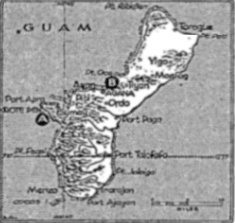The New York Times (June 26, 1944)
Nimitz checkup adds three warships to damaged list and 109 planes downed
By George F. Horne
USPACFLT HQ, Pearl Harbor, Hawaii – (June 25)
One hundred and nine aircraft and several damaged ships have been added to the enemy’s losses in the Marianas campaign as a result of a more complete checkup.
Adm. Chester W. Nimitz stated in a communiqué this afternoon that the latest reports on actions in the Marianas and Philippine Sea areas last Sunday and Monday brought enemy plane losses up considerably and added a heavy cruiser, a light cruiser and a light aircraft carrier to the roster of enemy fleet units damaged by our aircraft.
Our own losses have now been completely tabulated for the first time and they have been fairly severe in aircraft and fliers, although not at all large when viewed in the light of enemy losses and the magnitude of the actions involved.
The official score of the Marianas campaign from June 10 to June 23 follows:
|
Japan |
U.S. |
| Ships sunk |
30 |
0 |
| Probably sunk |
2 |
0 |
| Ships damaged |
51 |
4 |
| Barges sunk |
13 |
0 |
| Planes lost |
747 |
151 |
| Fliers lost |
? |
98 |
In addition, our forces damaged four aircraft and probably destroyed 16.
Our greatest plane loss occurred in the battle in the Philippine Sea last Monday, when our fliers attacked the Japanese task force. The damage to four of our ships, including two carriers, was reported minor.
Adm. Nimitz reported that U.S. Marine and Army forces had launched an attack against enemy ground forces on Saipan and had forged ahead against continuing stiff resistance. Advances on the western U.S. flank and around Mount Tapochau range from 500 to 800 yards.
This attack, preceded by intense naval gunfire and ground artillery preparation, occurred yesterday.
Enemy aircraft twice attacked us on Friday, dropping bombs among our transports off Saipan that did minor damage to several landing craft. That evening, a small flight of enemy planes dropped several bombs among our ground forces on Saipan Island, but casualties were very light.
The admiral’s recapitulation of damage and losses inflicted on the enemy disclosed that a week ago in the Sunday attack on our big fleet by swarms of enemy aircraft, we destroyed 402 planes, of these 369 were shot down by our carrier-based fighter planes in one of the great victories of the war for this category of warplane.
Eighteen enemy planes were brought down by anti-aircraft fire and 15 were destroyed on the ground in corollary engagements.
In this battle, we lost 27 aircraft, 18 pilots and six aircrewmen.
The communiqué said:
In the attack by our carrier aircraft upon units of the Japanese Fleet in the late afternoon of June 19 [Monday], one heavy cruiser and one light cruiser, neither of which was previously reported, were damaged.
One light carrier, not previously reported, received seven 500‑pound bomb hits. One of the three tankers previously reported sunk has been. transferred to the severely damaged category.
Twenty-six enemy aircraft were shot down, instead of the previously reported 17 to 22. We lost 22 pilots and 27 aircrewmen from 95 aircraft either shot down by the enemy or forced to land in the water.
Adm. Nimitz said the fighter sweep over Iwo Jima in the Volcano group on Friday cost the enemy 116 craft instead of 60 and said 11 more were probably shot down. We lost five fighters instead of four.
Fleet headquarters today made public the text of a message to Adm. Nimitz and the fleet from Adm. King, Commander-in-Chief, who said U.S. aircrews had established a new high in performance and that the damage done to the enemy was “unequaled in all seagoing aviation.”
Japanese claim 11 carriers
In a Dōmei broadcast from Tokyo, the Japanese claimed yesterday that thus far in the Mariana naval-air battle, U.S. losses included eleven aircraft carriers, four battleships and six cruisers sunk or damaged and more than 400 planes destroyed, the Associated Press said.
The broadcast said 70 U.S. fighters and bombers appeared over the Bonin Islands, north of the Marianas, on Saturday and claimed Japanese fighters shot down 37.
A Berlin broadcast, quoting a Dōmei dispatch, said that since Saturday morning the Japanese Air Force had sunk two carriers southeast of the Bonin Island group and a 10,000-ton transport east of Saipan.

